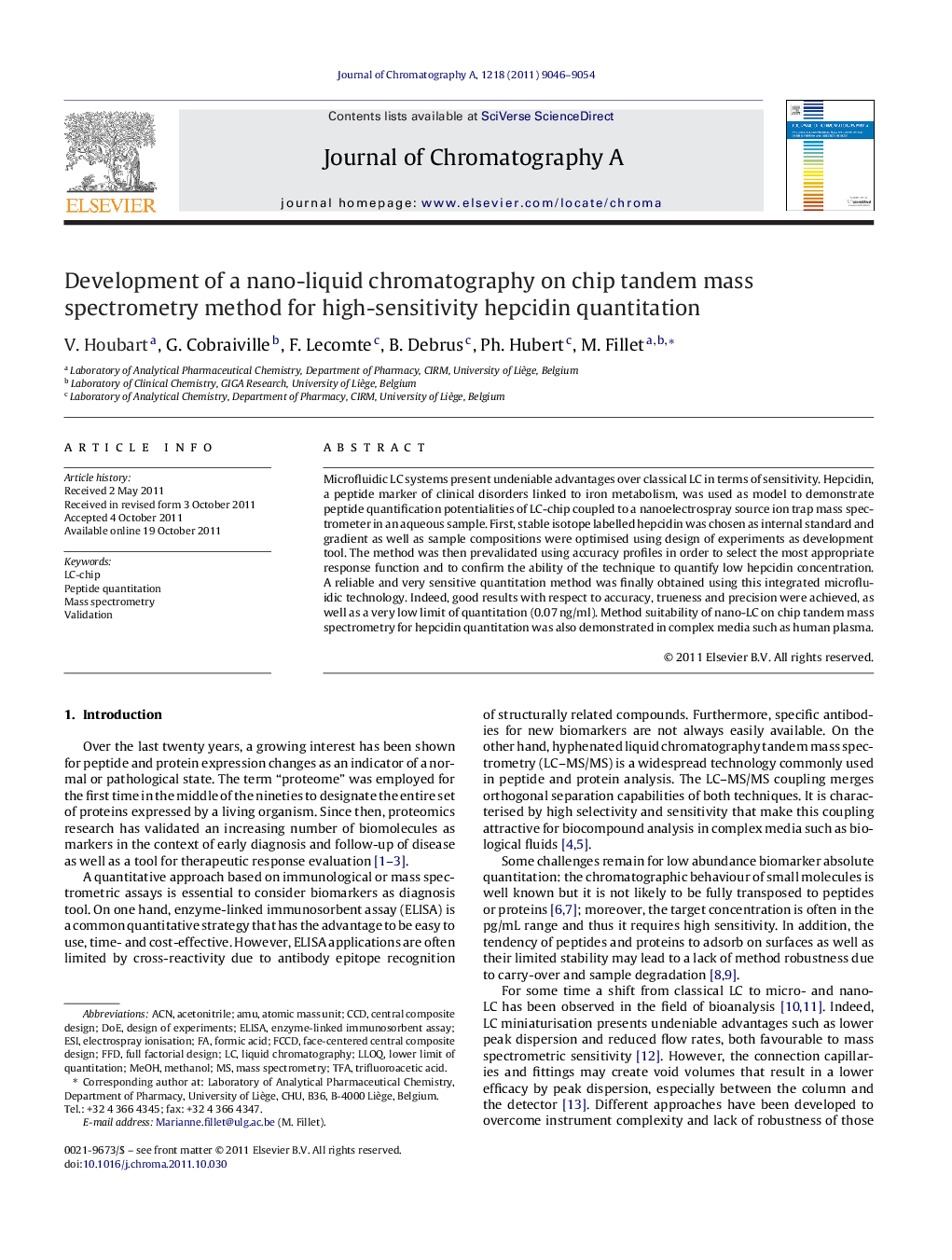| Article ID | Journal | Published Year | Pages | File Type |
|---|---|---|---|---|
| 1203176 | Journal of Chromatography A | 2011 | 9 Pages |
Microfluidic LC systems present undeniable advantages over classical LC in terms of sensitivity. Hepcidin, a peptide marker of clinical disorders linked to iron metabolism, was used as model to demonstrate peptide quantification potentialities of LC-chip coupled to a nanoelectrospray source ion trap mass spectrometer in an aqueous sample. First, stable isotope labelled hepcidin was chosen as internal standard and gradient as well as sample compositions were optimised using design of experiments as development tool. The method was then prevalidated using accuracy profiles in order to select the most appropriate response function and to confirm the ability of the technique to quantify low hepcidin concentration. A reliable and very sensitive quantitation method was finally obtained using this integrated microfluidic technology. Indeed, good results with respect to accuracy, trueness and precision were achieved, as well as a very low limit of quantitation (0.07 ng/ml). Method suitability of nano-LC on chip tandem mass spectrometry for hepcidin quantitation was also demonstrated in complex media such as human plasma.
► First LC-chip–MS/MS method for biomarker peptide quantitation. ► Hepcidin was used to show the feasibility of peptide quantitation by LC-chip–MS/MS. ► DoE was employed as a tool for LC gradient and sample composition optimisation. ► Prevalidation in aqueous samples: dosing range: 0.07–10 ng/mL; LOD: 0.02 ng/mL. ► Application to biological samples: SPE on HLB 96-well plates; mean recovery: 82%.
